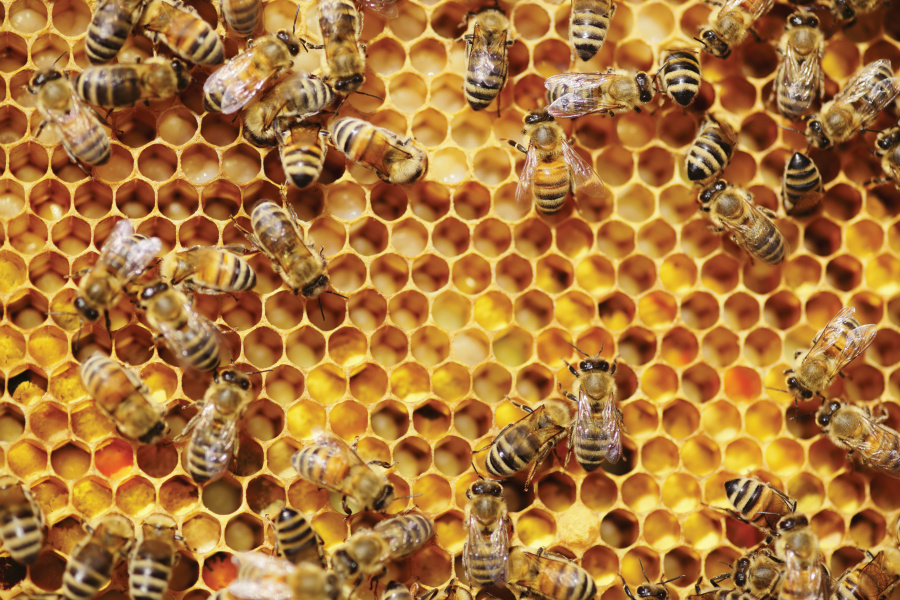
Kyle Straughn started raising bees out of necessity. The fifth-generation farmer needed to make sure there was adequate pollination services for the blueberries at Straughn Farms.
“At that time, we were getting whatever beehives hadn’t been sent on a truck across the country to pollinate the almond crops, so we weren’t getting quality bees,” Straughn recalls. “It was hurting us.”
Straughn purchased his first 100 beehives in 2007. Every year, he split the hives, raised new queens and started additional bee boxes. Now, 4,000 beehives pollinate the blueberries at Straughn Farms in Alachua County.
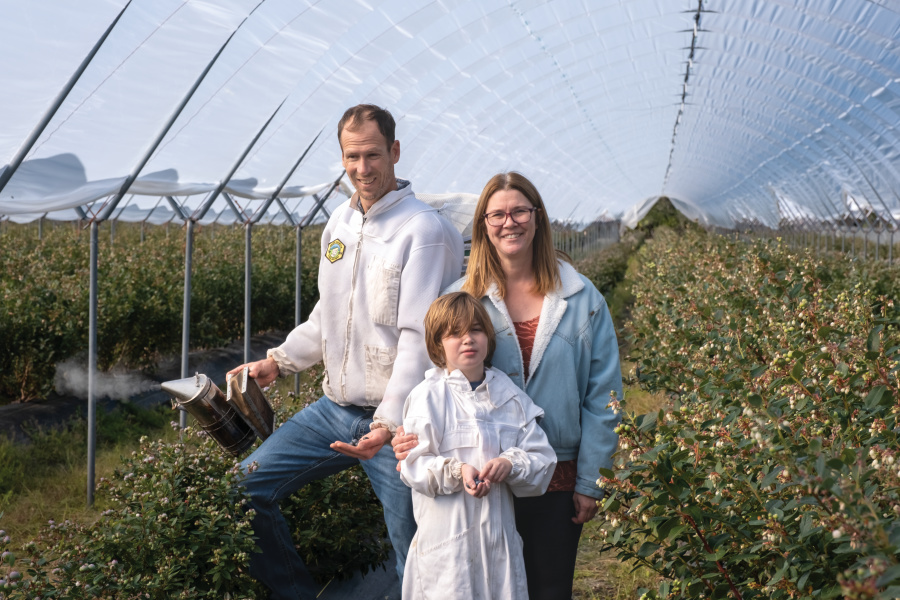
A Hive Effort
Straughn credits the mentorship of other commercial beekeepers and entomologist Jamie Ellis at the University of Florida for teaching him the art and science of beekeeping.
Unlike most commercial beekeepers who transport hives thousands of miles to pollinate crops, Straughn prefers to keep his hives close to home. Through his commercial beekeeping services, Straughn’s bees pollinate blueberries, watermelons, oranges, wildflowers and gallberries (evergreen shrubs native to Florida) within 300 miles of the farm.
Commercial beekeeping is a challenging business and includes a lot of uncontrollable factors, like the weather.
“Bees typically don’t fly until the temperatures are above 50 degrees, and if it’s cold, windy and overcast, the bees stay in their boxes,” he explains. “The bloom period for blueberries is concentrated into a two-week period in February when there may only be a couple of hours each day that the bees actually get out and pollinate, so we saturate our areas with honeybees and put out more beehives than what is typically required because we consider it to be good insurance.”
See more: Bunker Hill Vineyard & Winery Savors Local Flavors and the Environment
Although the bees do all of the pollination work, beekeeping is a laborious process, and it takes a team of up to eight beekeepers to oversee the operation. While most other areas of the operation, from hauling hay to harvesting blueberries, are mechanized, beekeeping hasn’t changed much in the last century and is still done mostly by hand. So, Straughn Farms depends on its team of eight skilled beekeepers to manage the operation.
“It’s extremely physically labor-intensive work,” Straughn says.
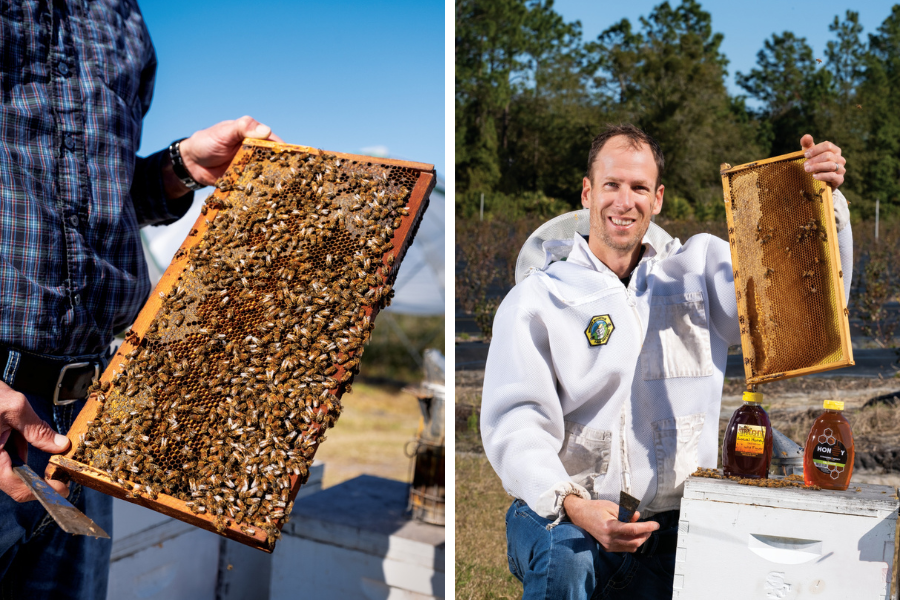
The Business of Bees
Kim N Kyle Straughn Honey can be purchased at local retailers like Ward’s Supermarket, The Fresh Market, Bluefield Estate Winery, Island Grove Wine Company, Northwest Seafood, Pearl Country Store & Barbecue, Ace Hardware and other retailers throughout Florida.
Large orders can be placed in advance and picked up at one of the locations in Alachua County.
Raising bees for pollination has been successful for Straughn Farms and has led to other opportunities. One year after establishing the initial beehives Straughn and his wife, Kimberly, launched Kim N Kyle Straughn Honey.
In addition to placing hives in their own fields, Straughn Farms rents tens of thousands of acres. Placing the bees among different crops, like wildflowers and orange groves, allows Straughn to create different honey varieties – and he is meticulous about the process.
“Most people don’t realize that honey varieties are made in a two- or three-week period,” he says. “We put bee boxes in the orange grove for three weeks as the flowers come in, then those boxes are taken off and we’ve made orange blossom honey. It’s very intentional. We’re making sure it’s honey from a specific crop and that it’s consistent. So, we are taking the honey directly from the beehive and putting it into the bottle.”
Every year, the farm bottles 30,000 pounds of honey sold under the Kim N Kyle Straughn Honey label. Straughn also has wholesale customers who purchase up to 60,000 pounds of honey from his beehives every year. His focus is on serving high-end buyers, like Savannah Bee Company, who share his passion for high-quality honey.
See more: Beneficial Insects That Keep Your Garden Healthy
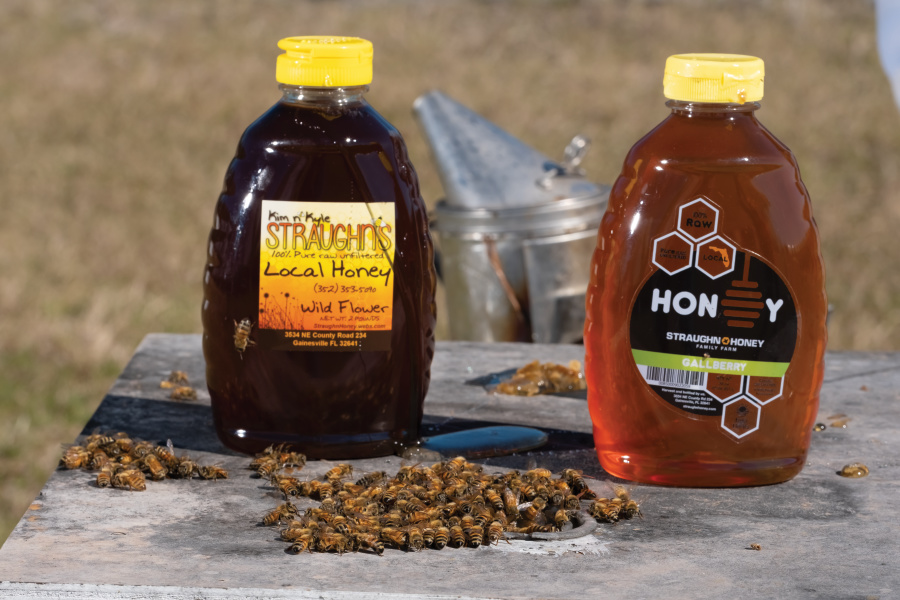
Savoring the Sweetness
Bottling commercial quantities of great tasting honey requires happy, healthy bees. So, Straughn monitors the hives, addressing pests and other issues that threaten their survival. The process has made him more in tune with the environment.
“Beekeeping has taught me to become a better biologist and more aware of what’s happening in the ecosystem as far as what is blooming,” he says. “Bees tell a story. It’s beyond just what’s going on with your bees and their beehive. They tell us what’s going on in the natural resources and world around them. The ecosystem around them has got to be good for them to flourish.”
The dedication to beekeeping and bottling pure, unfiltered honey shines through in the flavor.
“I’m the biggest consumer of my own honey. I put it in my coffee and on my peanut butter and honey sandwich every morning,” Straughn says. “It’s pure and consistent and very, very tasty.”
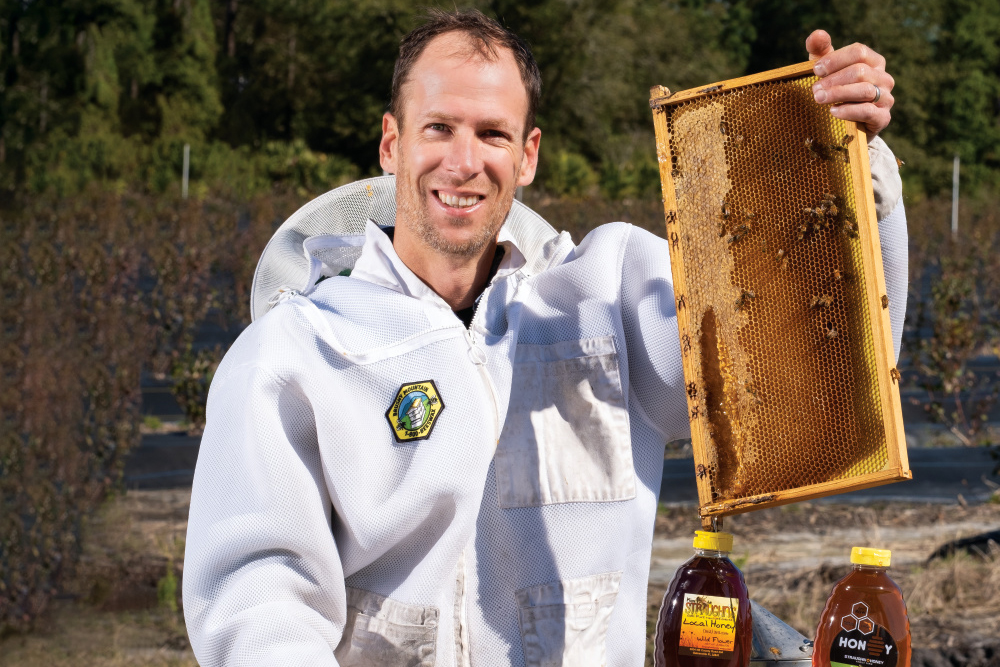








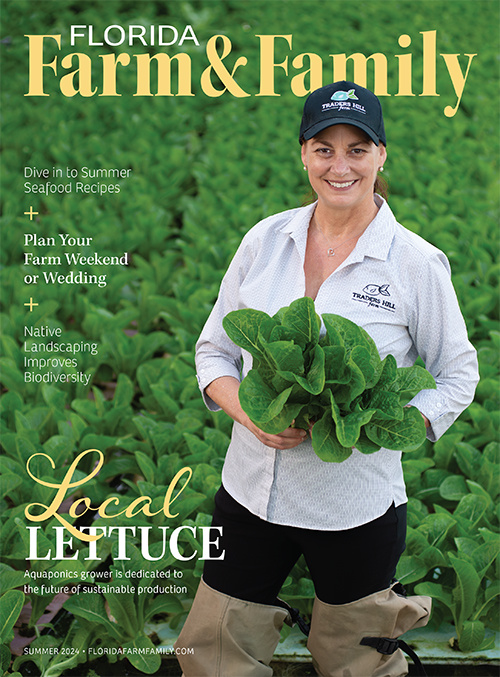
Where can I get some of your honey close to Newberry???